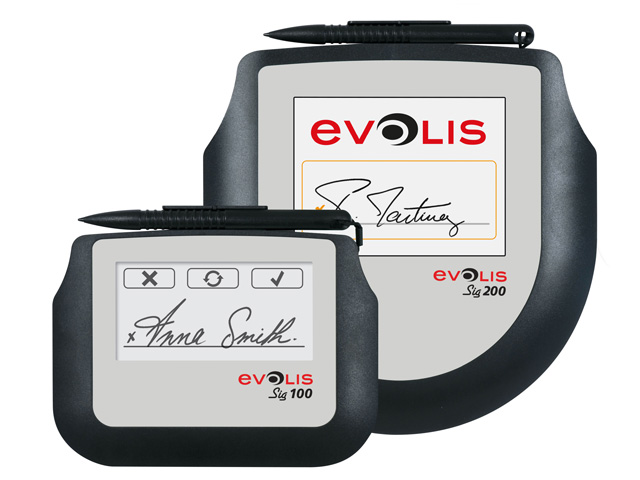Digital signatures are in the process of replacing paper signatures
Electronic signatures facilitate the validation stages for documents
For example, when a contract is signed, we see the following process:
For a paper signature

Signature with a signature tablet

You will notice
- a reduced processing time
- reduced management costs (scanning, saving, archiving, printing, and sending)
- reduced cost of supplies (paper, ink, etc.) and transport
The signatory will get a positive and modern view of the organization and appreciate the time saved by the use of a signature tablet.

Electronic signatures: soon to become an integral part of all signing procedures
As well as being widely used by financial institutions, electronic signatures are now becoming popular in other sectors:
- Government administration (tasked with implementing simpler and less costly procedures)
- Telecommunications
- Stores
- Public services, healthcare
- Lawyers' offices
Hand-written electronic signatures
Hand-written signatures remain the most accepted type of signature in many domains.
The electronic versions have the following advantages:
- verification of the end user's identity (authentication)
- data integrity (for sensitive, confidential data)
- higher level of security than with more traditional methods of sending documents:
- counterfeiting is virtually impossible
- low chance of losing digital copies
- time-stamping guarantees the signature date
- rapid write-down of set-up costs (very quick return on investment)
- implementation supported by the growing use of cloud computing
Banking and Insurance Example
Context:
Banks manage many documents that require the addition of a signature:
- operations related to a bank account: opening an account, making changes, closing an account, deposits, withdrawals, etc.
- various contracts
Mostly, bank documents are:

This process has several disadvantages:
- Paper and ink costs
- Delivery costs
- Loss of time
Solution:
Using the Evolis Sig100 & Sig200 signature pads at the counter.
The customer's signature is electronically inserted into the document and automatically stored in the bank's Electronic Document Management software.
Advantages:
The digitization of handwritten signatures optimizes the process of validating documents:

- The time savings are considerable.
- Electronic signatures are more secure. The signature can be monitored throughout the process, tackling fraud through the use of biometric data.
- As all electronic documents are available in real time, archive searches are faster.
- The use of electronic signatures communicates a modern image of the banking organization, and improves customer satisfaction.
- There is a very rapid return on investment (about 1 year)